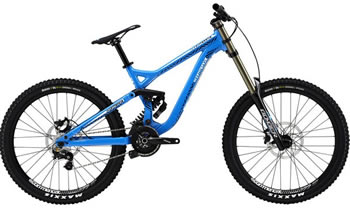Difference between MTB and Road Bike
Key difference: MTB and Road bikes are among the most popular bikes known for their specialization tasks and uses. MTB stands for Mountain Bikes are designed for off-road cycling, especially on the non-paved type of paths and environment. On the contrary, Road Bikes are especially designed for the paved road surface cycling. Both these bikes differ in their shapes, designs, tires and weights.
Purpose:
The basic difference between MTB and Road Bike lies in their purposes; i.e. MTB are special purpose bikes which are used for non-paved roads and paths. On the other hand, road bikes are designed for paved or smooth surfaces. Both the bicycles were structured according to their usages and hence are preferred on different locations. They differ in their designs and components and their weights play a vital role with regards to the speed and racing aspects. Mountain biking is a part of Olympic sports since 1996’s, but is rarely known due to its less fame and exposure.
Design and Structure:
In market, there are many different types of bicycle sued for desirable purposes today. Out of them, mountain bikes (MTB) are special purpose bike having knobby tires, which provides good traction and shock absorption. The bike composes of front and rear suspension with 30 gear speeds, which are put to use on varieties of terrains. While, road bikes are light weighted with aluminum frame and drop handlebars; these have high pressure narrow tires in order to decrease the rolling resistance.
Types:
MTB are used for cross country biking, which can be further classified according to the paths and surfaces like the rough forest paths, smooth fire roads and single track. Mountain bikes are also used for downhill biking purposes, which are help on steep slopes with no extended climbing sections. Actually, the original free-ride bikes were modified as downhill bikes, which included speed gearing, which enabled the riders to go up and down the hills. The modern free ride bikes are similarly designed to that of the downhill bikes, with a slightly less suspension travel and lighter weights.
While, road bikes are used for touring purposes, in which the heavy luggage and weights can be carried out. These are more rigid and tough bikes with over flexibility. Also, hybrid road cycles are utility type of cycles having the off-road capabilities and hence these are used in both, city riding and commuting in paved road cycling. Hence, these utility bikes are most commonly used and appreciated type of bikes accepted worldwide for common community and running errand purposes.
 Features of MTB:
Features of MTB:
- These provide a rigid frame, with a rigid fork and fixed rear and no suspension.
- There’s a hard tail, which provides a frame with front suspension fork and no rear suspension.
- There’s also a Soft tail, which provides a frame with small amount of rear suspension, activated by flex of the frame instead of pivots.
- There are dual or full suspensions, which provides a front suspension fork and rear suspension with a rear shock and linkage that allow the rear wheel to move on pivots.
- These have stouter, more upright frame.
- They offer higher clearance to get over rocks, logs and through ruts, etc.
- They can take a lot of stress and abuse and still allow the rider to comfortably negotiate rugged terrain and go over or through obstacles that he or she may encounter on the trail.
 Features of Road Bikes:
Features of Road Bikes:
- These are very lightweight frame, wheels and components.
- These consist of a drop (curled) handlebar, though some have a flat bar like a mountain bike.
- Have narrow wheels and tires.
- These consist of a composite (carbon fiber) front fork.
- There are no front or rear suspension.
- These are available in both, men's and women's styles in wide range of sizes.
Comparison between MTB and Road Bike:
|
|
MTB |
Road Bike |
|
Design and component features |
MTB’s have wide knobby tires for good traction and shock absorption, front and rear suspension, up to 30 gear speeds for a variety of terrains. |
Road bikes have light weight aluminum frame with drop handlebars, high pressure narrow tires to decrease rolling resistance. |
|
Purpose of design |
These were designed especially for off-road cycling. |
These were crested primarily for paved roads. |
|
Components |
|
|
|
Rides on |
dirt tracks, over rocks, steep passes and not on paved roads |
mainly on paved road environment |
|
Types |
cross country, all day endurance, free ride biking, downhill biking |
touring, hybrid, utility, roadster, recumbent |
|
Used as |
Sport and Recreation |
Conveyance and Recreation |
Image Courtesy: vitalmtb.com, pro-roadbikes.com









Add new comment